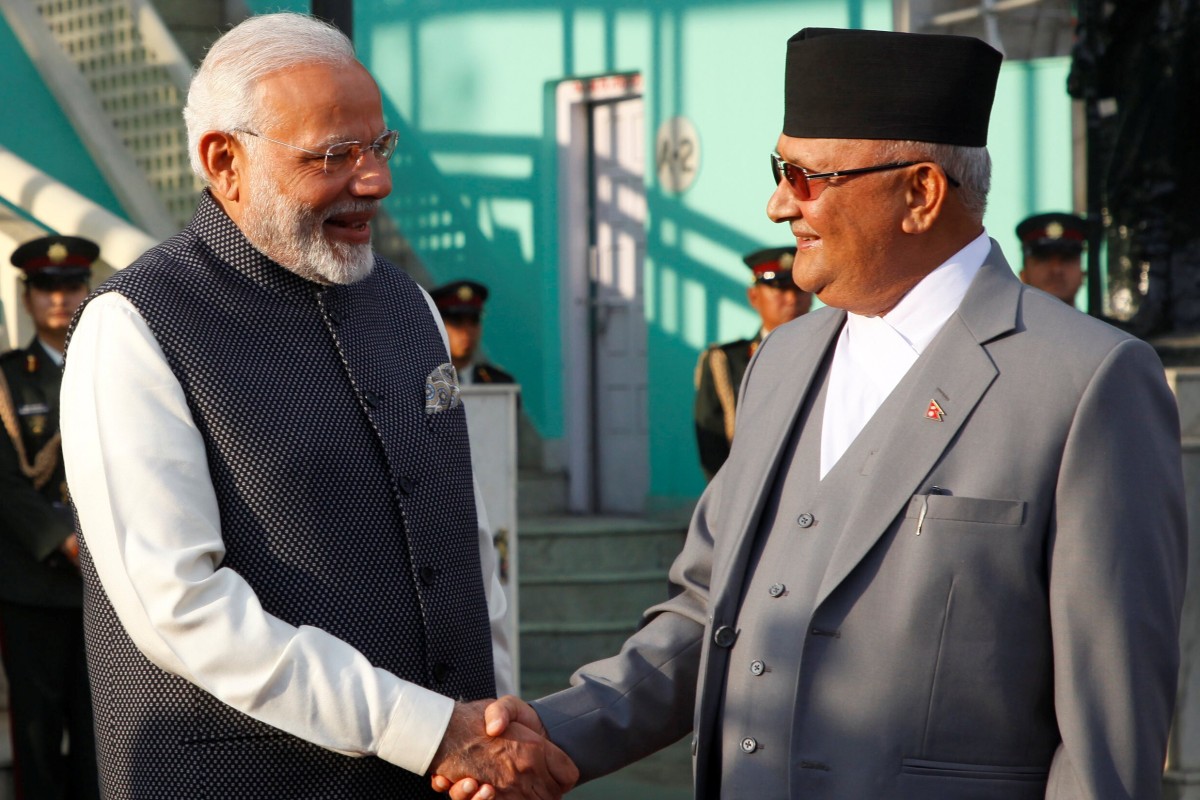- After months of acrimony over territorial disputes, relations between the Himalayan neighbours have warmed
- For both countries, a major common concern is the increasing influence of Beijing across the subcontinent, with India looking to counter China’s moves in Nepal
Prime Minister K.P. Sharma Oli of Nepal met Indian army chief M.M. Naravane in Kathmandu on Friday in the first high-level contact between the Himalayan neighbours in months, with analysts saying it signalled both sides were aiming for a thaw in their frosty relations.
The countries have been at loggerheads since last year, when Nepal objected to a map released by India showing control over a region in dispute. The issue was aggravated after Nepal released its own territorial map that included areas controlled by India, prompting New Delhi to describe it as a “cartographic assertion” and an “artificial enlargement” of Kathmandu’s claims.
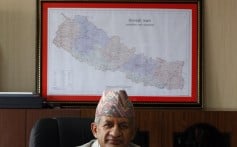

Nepal also objected in May when Indian Defence Minister Rajnath Singh inaugurated a new road in border territory controlled by India but claimed by its neighbour. Naravane, reacting to Kathmandu’s opposition to the new road, had hinted at China’s role in pushing Nepal to take up the issue.
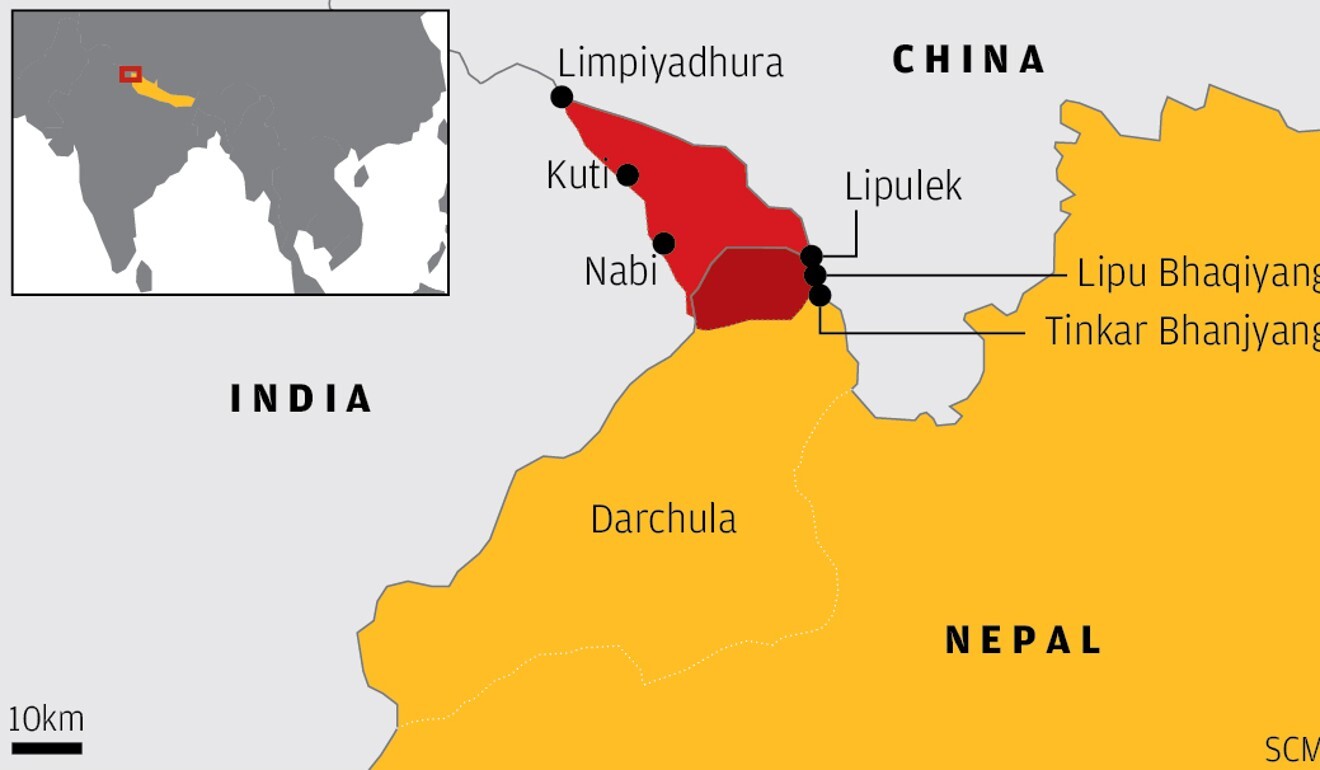
Subsequently, Oli hit out at India, which now has more than 8.4 million coronavirus cases, describing Covid-19 as the “India virus” and blaming it for the rise in infections in Nepal.
“It won’t take either of them anywhere,” he said.
India realises that it has no option but to engage with Kathmandu so that public perception about it in Nepal does not deteriorate
On the face of it, Naravane’s visit seems ceremonial – it follows a decades-old tradition between the two countries of recognising each other’s army chiefs with an honorary title. On Thursday, Naravane was conferred the rank of an honorary general in the Nepali Army by President Bidya Devi Bhandari.
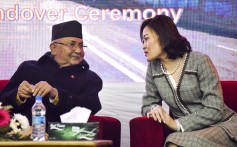

“It seems that reluctance has now been shed. India realises that it has no option but to engage with Kathmandu so that public perception about it in Nepal does not deteriorate. Poor public perception would have remained, even if Oli would have gone,” said the former diplomat, on condition of anonymity.
In recent months, both sides had indicated they wanted to bridge the impasse. Oli called Indian Prime Minister Narendra Modi on August 15, India’s independence day, with the two agreeing during their phone call to “continue discussions on bilateral matters in the future”, according to a Nepali foreign ministry release.
A month after the call, the Oli government ordered a halt to the distribution of textbooks containing the contentious map showing Indian-controlled regions as its own, citing “factual errors”. Last month, Oli dismissed Deputy Prime Minister Ishwor Pokharel, who is also the country’s defence minister – a move widely seen to be a signal of appeasement to New Delhi, since Pokharel was seen to be leaning towards China.
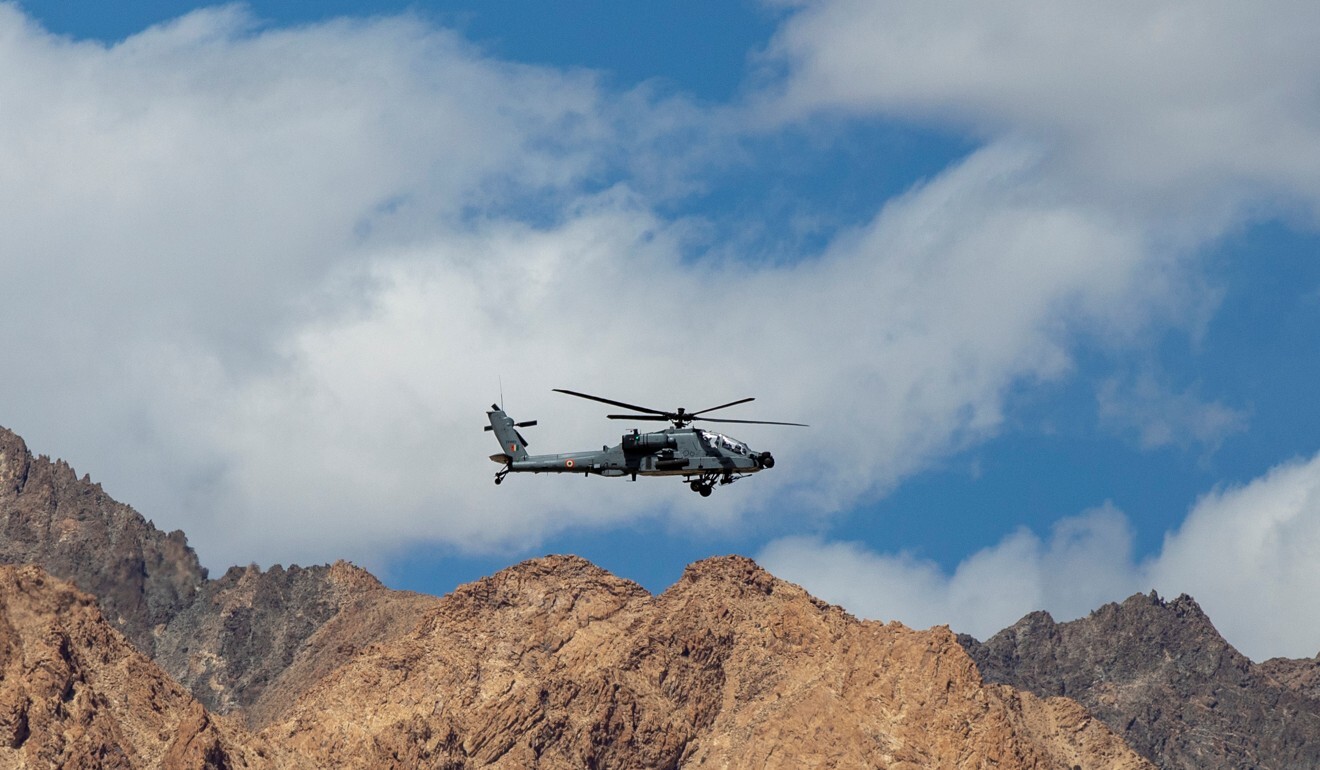
According to retired Nepalese army general Binoj Basnyat, the visit “indicates that there is a political desire to investigate the cause of mistrust. The two sides are not just talking about friendship but also the common interests they share.”
For both countries, a major common concern is the increasing influence of China across the subcontinent. India’s relations with China are at their lowest in decades, with soldiers from both sides locked in a bitter stand-off at the Line of Actual Control in its Ladakh region for the last six months with no resolution in sight. The regional army commanders of both sides are slated to meet on Friday for their seventh round of meetings in an attempt to break the deadlock.
Indian defence chief of staff Bipin Rawat on Friday said the escalating border tensions with China could lead to a wider conflict. “In the overall security calculus of border confrontations, transgressions, unprovoked tactical military actions spiralling into a larger conflict therefore cannot be discounted,” he said in his address at New Delhi’s National Defence College. “The situation along Line of Actual Control in Eastern Ladakh remains tense.”
Amid this, China’s influence in Nepal has been rising – China’s ambassador to Nepal, Hou Yanqi, has been actively meeting dissidents and critics of Prime Minister Oli within his party, the Nepal Communist Party. The meetings have been seen as attempts by Beijing to mediate in domestic politics and help Oli keep his government afloat.
Basnyat said the relationship between India and Nepal was entering a new phase. “South Asia has traditionally had a security architecture in place, with India at the centre of it. But now China is in South Asia, militarily, diplomatically and politically,” he said.
Such concerns in New Delhi about Beijing’s intentions might be driving the rapprochement with Kathmandu, analysts said.
But news reports in Kathmandu have also said that China has encroached upon Nepali land in the border areas of Humla district in western Nepal. A Nepali lawmaker, Jeevan Bahadur Shahi, has even accused the Oli government of looking the other way on the encroachments, and has claimed that Nepal had lost “60-70 hectares” of land – claims that both Kathmandu and Beijing have rejected.
A Nepali military source said India and Nepal’s increased engagement was because of China’s increased presence in the region.
“Both sides have realised that a lot is at stake here, for both countries,” he said. “That is why they need to set aside differences.”


